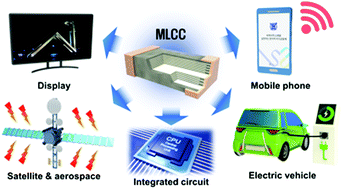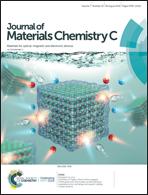Perspectives and challenges in multilayer ceramic capacitors for next generation electronics
Abstract
The multilayered ceramic capacitor (MLCC) is a key component of electronic equipment, such as smartphones, portable PCs and electric vehicles, which contain a number of MLCCs. As MLCCs distribute and control the amount of current flowing through circuits, remove noise, and prevent malfunction, MLCCs play a key role in enabling electronic devices to have high performance, multi-functionality, and high integration. This review highlights the critical issues and recent progress in developing highly volumetric-efficient and high capacitance MLCCs from the viewpoint of designing a BaTiO3-based dielectric layer. After a brief introduction of MLCCs and dielectric materials, we summarize the current issues in developing BaTiO3-based dielectric materials for MLCCs with high performance and reliability and describe the strategies to optimize dielectric properties through nano/microstructure control, chemical modification and doping. Finally, we provide an outlook on the development and future application of MLCCs. It is anticipated that this review can serve as an overview and evaluation of state-of-the-art synthesis and design of BaTiO3-based dielectric materials for MLCC applications.

- This article is part of the themed collection: Recent Review Articles


 Please wait while we load your content...
Please wait while we load your content...